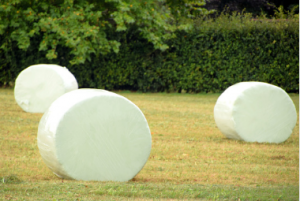There are a variety of advantages to using twine to tie your silage bales. Biodegradability, durability, and cost are just a few of the benefits of twine. However, its versatility also extends beyond agriculture. Twine can be twisted into various shapes, including doormats and gifts. However, its primary use is in agriculture. Listed below are some of its other advantages.
 Biodegradability
Biodegradability
The biodegradability of baling twine has been a hot research topic for years. While some twine is recyclable, others are not. There are differences between natural and synthetic twine, so it is crucial to consider the biodegradability of your twine before you begin to compost. If you are composting your silage, you should choose natural twine to minimise its impact on the environment. Visit silagewrap.com.au/small-square-baling-twine/ for more information.
Choosing biodegradable twine can benefit your crops, reduce operating costs, and lessen the negative environmental impact. For example, use biodegradable silage twine. You can collect it with the residual plant mass at the end of the growing season, benefiting the ecosystem and reducing your operational costs. Biodegradable twine is also suitable for modern greenhouse structures where crops are supported using crop support twines.
Durability
Twine is an excellent choice for baling twine, but it must be chosen carefully to suit the equipment and tools used for the process. It should be UV stabilised and of the appropriate weight and length to ensure a high press density and optimum space utilisation inside the baling machine. In addition, it should be able to withstand high temperatures and knotting. Twines must also be able to handle the strain of the silage baling process without causing undue damage to the machinery.
Although twine-wrapped bales can do the job, it is recommended that the bales be stored on well-drained surfaces, as they are more prone to water damage than netwrap-wrapped ones. Regardless of storage conditions, net-wrapped bales fare better than bales wrapped in twine. However, this is only one factor that needs to be considered. You must also consider fuel and time spent moving the bales. Visit silagewrap.com.au/small-square-baling-twine/ for more information.
Cost
The cost of silage baling twine varies by producer. In the U.S., the Most Popular Silage Wrap has a low price tag of 50 cents per bale but varies widely in other countries. Fortunately, solar-degradable twine offers the benefits of both sisal and synthetic twine, with longer storage life. Twine costs 50 cents per bale, but the time it takes to wrap a bale more than offsets the cost.
In addition to saving on fuel, the net wrap can boost productivity. As nets are weather-resistant and easy to move, they can increase hay production. Furthermore, they tend to retain more leaves, so the producer may consider netwrap over twine. Therefore, this material is a good alternative for balers that want to maximise yields and minimise fuel costs.
Time required to wrap bales
Depending on the bales’ size and shape, it may require several turns to wrap a bale properly. Make sure the bales are of the same length and shape to ensure a seal between the plastic film and the bale. Before wrapping, stretch the film to at least 70% of its length. Once wrapped, the bales can be stored on well-drained ground for optimal storage conditions.
The net wrap should be the preferred method if time is of the essence, and it costs about twice as much as twine but reduces harvest and storage losses. The net wrap also reduces time, fuel, and equipment wear. Net wrap takes about two to three turns in the baler, meaning it can produce more bales per hour. It is an excellent way to save time and money. In addition, you don’t have to worry about hay losses or fuel costs. Visit silagewrap.com.au/small-square-baling-twine/ for more information.
While there are many benefits to baling with twine, you should be sure to compare the features of these products to ensure they will work well for your needs. It would help if you considered several things when selecting a baling twine, including its weight, dimensions, and meter weight ratio. Twines with lower weight are usually easier to load into baling machines, and the stronger ones will be stronger and more resistant to breakage. While baling twine is often used for straw and hay, there are several other uses. Apart from its environmental benefits, it is an economical and practical option for farmers. For instance, baling twine can also be used for other applications, such as creating a stable platform for harvesting. If you’re an organic farmer and need to save on transport costs, baling twine is the way to go. With the suitable twine, you can increase productivity, decrease transport costs, and make your farming operation more efficient.